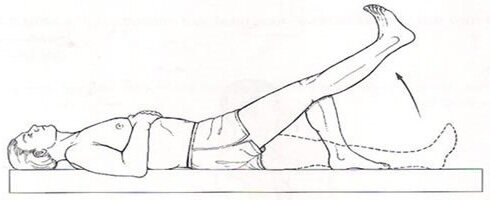Patello-Femoral Pain Syndrome Exercises
What is Patello-Femoral Pain Syndrome?
Patello-Femoral Pain Syndrome or PFPS is a common condition that causes pain in the front of your knee, particularly around the knee cap. PFPS is prevalent in approximately 25% of the athletic population and most commonly affects young adult females [1].
Pain is experienced because of abnormal tracking of the knee cap as the knee bends. This causes abnormal irritation experienced between the front of your femur and the back of your knee cap, which can be thought of as the wheels of a train coming off of the tracks. This is typically caused by poor coordination or weakness to the medial and lateral quadriceps muscles. In addition weakness or poor coordination of your gluteal muscles can cause the femur to rotate inwards, which can also cause abnormal tracking of your knee cap when the knee is bending.
PFPS Management
Using foam rollers or massage balls on tight muscles at the quadriceps, ITB band, hip flexors, and glutes can help to alleviate pain caused by PFPS. Most importantly, a strengthening program targeting both the quadriceps and hip muscles has been shown to be the most effective exercise program to improving PFPS pain symptoms. [2] Here are some exercises for the quadriceps and hips that are effective in treating PFPS.
Quadriceps Exercises
Straight Leg Raise: Lay on your back with one leg bent and one leg straight. Tighten your quadriceps muscles on the straight leg and lift it off the floor while keeping the quadriceps muscles tight throughout. Then slowly lower your leg down with good control. Perform 3 sets of 12 and modify the amount of repetitions based on how difficult you find it.
Lateral Step Ups: Stand on one leg of the edge of a small 15 cm step. While keeping one foot flat on the step, slowly lower the opposite foot until the heel gently touches the ground. Then immediately shift your weight back onto the leg on the step and lift yourself up back to the starting position. Perform 3 sets of 10 and modify the amount of repetitions based on how difficult you find it.
Hip Exercises
Side Lying Leg Raises: Laying on your side with your bottom leg bent and then lift your top leg up while keeping it completely straight. Complete 3 sets of 12 repetitions to start and modify the amount of repetitions based on how difficult you find it.
Banded Lateral Walks: Place a theraband around both of your feet (at the forefoot) and stand with your knees slightly bent. Then perform 10 small steps sideways and then repeat in the opposite direction to target both sides of your glutes. Perform 3 sets of this and modify the amount of steps based on how difficult you find it.
If you have any questions regarding anterior knee pain or think you may benefit from physiotherapy, please give us a call at (02) 8411 2050. At Thornleigh Performance Physiotherapy, we can give you an accurate diagnosis and treatment, to help you get back in action as soon as possible. We are conveniently located near Beecroft, Cherrybrook, Hornsby, Normanhurst, Pennant Hills, Waitara, Wahroonga, Westleigh, West Pennant Hills, and West Pymble.
References
Nunes, G. S., Stapait, E. L., Kirsten, M. H., De Noronha, M., & Santos, G. M. (2013). Clinical test for diagnosis of patellofemoral pain syndrome: Systematic review with meta-analysis. Physical Therapy in Sport, 14(1), 54-59.
Adebisi Bisi-Balogun, & Firdevs Torlak. (2015). Outcomes following Hip and Quadriceps Strengthening Exercises for Patellofemoral Syndrome: A Systematic Review and Meta-Analysis. Sports (Basel), 3(4), 281-301.





